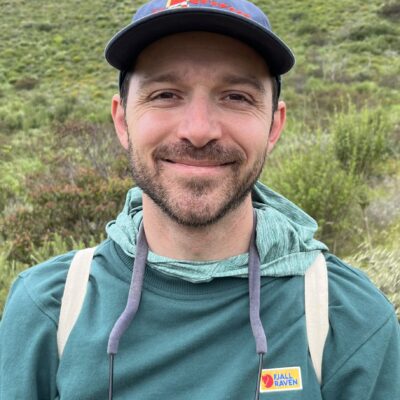Proper 21, Year B
Let the words of my mouth and the meditation of my heart be acceptable in your sight,
O Lord, my strength and my redeemer. (Ps 19:14)
“If any of you put a stumbling block before one of these little ones who believe in me, it would be better for you if a great millstone were hung around your neck and you were thrown into the sea.” . . . . Does Jesus sound a little testy to you? . . . You know that point in a weeks-long family road trip when you’ve been driving for a while, but you’re not anywhere near home yet? You’ve already gone through the stack of music, played all the car games, had moments of silence (or not); a bottle of soda may or may not have been thrown across the car out of exasperation. It’s that point when you just keep going because you can’t stop now. That’s roughly where Jesus and the disciples are currently as we read through the gospel of Mark.
Mark chapter nine began with the Transfiguration event. Here Jesus instructs the three disciples not to speak of it, and says that the “Son of Man” is to go through suffering and be treated with contempt. After that, Jesus heals a boy whom the disciples hadn’t been able to heal—which could have been a humbling moment for the disciples. From there they go through Galilee where, the author of Mark notes, Jesus was trying to teach his disciples about what’s coming for him in Jerusalem. Of course, as it says in verse 32, “they did not understand what he was saying and were afraid to ask him.”
On their way to Capernaum (where our passage picks up), we learn that the disciples had been arguing about who among them was the greatest. To this Jesus responds by picking up someone’s child and saying, “whoever welcomes [receives] one such child in my name welcomes me, and whoever welcomes me welcomes not me but the one who sent me.” (v 37)
And then John speaks up.
“Teacher, we saw someone casting out demons in your name, and we tried to stop him, because he was not following us.” That’s it, we’re pulling the car over at the next turnoff.
Today’s passage is a series of wordplays and inversions that Jesus throws at his disciples in an effort to get them to understand that the boundary lines they draw for who’s allowed the prestige of following Jesus are, simply, wrong. The narrative structure uses repetition and mirroring of words and phrases to highlight two oppositional forces: that of “receiving” (or, welcoming) and (on the other side) putting up a stumbling block, or “causing to be scandalized.”
He sets this up first by stating, “whoever is not against us is for us.” Often, in this day and age, we hear the phrase, “if you’re not with us, you’re against us!” (think of the moment in an action film where the so-called good guys are about to do some daring act to turn the tide against evil, or something like that.) By turning that around, we hear a shift in emphasis. The “—is for us” at the end opens the possibility that anyone—a stranger, a gentile—could be on “this” side of the boundary line, with Jesus, regardless of whether or not they were chosen as the twelve were. According to Jesus, the simple act of sharing a cup of water (in Jesus’ name) counts as a meaningful act of compassion.
Throughout the gospel of Mark, and at this midpoint in particular, its important to slow down and take note of who is giving and who is receiving; of who is causing another to stumble, or who is causing scandal against whom. In verse 41, Jesus poses the likely possibility that the disciples will find themselves at some point in a position of need. So, while John is trying to take a posture of importance and stature, Jesus uses the example of welcoming a cup of water and the blessing that comes with it to reverse a flow of power that the disciples were falling into.
In other words, Jesus is trying to get the message across to his disciples that, for one, they do not have a monopoly on the power of God in Christ or the message of the kingdom, and, secondly, trials and suffering are coming their way the closer they get to Jerusalem. On that last point, the disciples still do not understand—and, really, who can blame them? In so many ways they simply cannot begin to comprehend until the end.
And so, as always, we find ourselves in good company when we recognize just how perplexing and nuanced these sayings of Jesus can be. Fortunately, in the case of today’s lectionary, we also have the story from the Hebrew Scriptures of Moses chiding Joshua—one of his chosen—when the Spirit of God crossed some boundaries.
“Would that all the Lord’s people were prophets, and that the Lord would put his spirit on them!” cries Moses when Joshua tries to get him to stop the two other men. Joshua and the young man were scandalized when they realized that Eldad and Medad were prophesying in the camp and not in the tent with all the others. The Spirit of God must have gone rogue—there are men doing God-things in a non-God-thing zone.
Oh, how we humans love our boundaries.
For John, as for Joshua before him, the thought that someone who did not fit the proper criteria could participate in the works of God was unfathomable. And yet, that is exactly what Jesus made real and Moses, in his time, desperately desired. Keeping boundaries is tiring. And while, for our creaturely existence, there are certain kinds of boundaries we need in order to thrive, with God all things are possible. Those who have been rejected are welcomed. Those with no home or family can belong to community. Healing is possible. Sharing just the right word of encouragement in just the right moment is possible. Giving and receiving a cup of water is possible.
When we follow in the way of Jesus Christ the only boundary line is the one that leads us closer to the Triune God. It’s that line that differentiates moving toward or away from Love incarnate—which means that the line evades clear definition. Are you walking in the way of love? Are you choosing compassionate action in this moment, and the next? Are you welcoming and receiving others who may be considered only partially human—the least, the last, and the lost? Are you allowing yourself to be received and welcomed by others; reversing the flows of power that the world presupposes?
Have I ever told you the story of a river that broke its bounds? Perhaps you’ve heard this tale elsewhere.
For a century the Elwha River on the north end of the Olympic Peninsula was a domesticated creature, generating power for logging communities and operations from two dams: the Elwha dam (108 feet tall) and the Glines Canyon dam (which stood at 210 feet). These were impressive feats of early 20th c engineering made to fuel progress—which they did, for a time. Towns like Port Angeles grew and became remote hubs for timber exports. Families raised children. Communities built schools and libraries. Tourists and mountaineers were drawn to the rugged trails off hwy 101, and camping sites dotted the foothills.
Meanwhile, the river flowed as if suspended in time. Its waters collected in reservoirs behind each dam, rising and falling with the temperatures and precipitation levels. The lakes that formed swallowed up forested areas, changing the terrain to aquatic ecosystems—but without the presence of salmon and trout that used to return for spawning. And without changing course much.
Can you imagine? A river without its salmon, here in the region of Cascadia?
Eventually, the timber industry had its own ‘come to Jesus’ moment. (Remember the northern spotted owl? Or is that still forbidden table talk at family gatherings?) Commercial plants shuttered. Descendants and their families moved away. The dams continued to generate a modest amount of electricity for a few local sites, and the tribes along with scientists worked on the fish hatcheries in the hope of maintaining populations of salmon and trout. Tides were changing, and by the end of the century, folks were saying it was time for the dams to go.
It took at least a decade to convince leaders, plus another couple to develop and implement plans. Until one day in 2014 the final blast took down the last of the concrete impediments at the Glines Canyon dam. The river flowed freely once again. Fish could begin to return to their spawning grounds.
In November of 2015, a year after the last dam removal and following a series of storm events, the river “flexed its new muscles” and covered an entire campground in silt. In subsequent years it has continued to wash out roads and create its own path as it pushes old sediment and debris down to the delta and out into the sea.
The fish are returning and, with them, so are important traditions. The Lower Elwha Klallam tribe held its first ceremonial and subsistence fishing just last year. Ten years after dam removal, the waters are reforming and reshaping the area to support human and more than human communities and ecosystems.
Like the Spirit, waters create their own boundary lines.
John and the other disciples wanted to dam up the power of the spirit, to put a trademark on the teachings of Jesus (at apostles.com). They kept slipping into the presumption that they were the ones flowing with power because of their proximity to this Jesus. . . But that isn’t how the Spirit works. Moses knew it. Jesus embodied it.
And so, this is the challenge and the adventure for us today: follow the river. Notice where and when it swells. Visit its quiet side channels. Look for the ways it changes course. The river of life is our boundary line—not to divide ourselves from others, but to follow it to the headwaters, which is our Creator God.




Leave a Reply